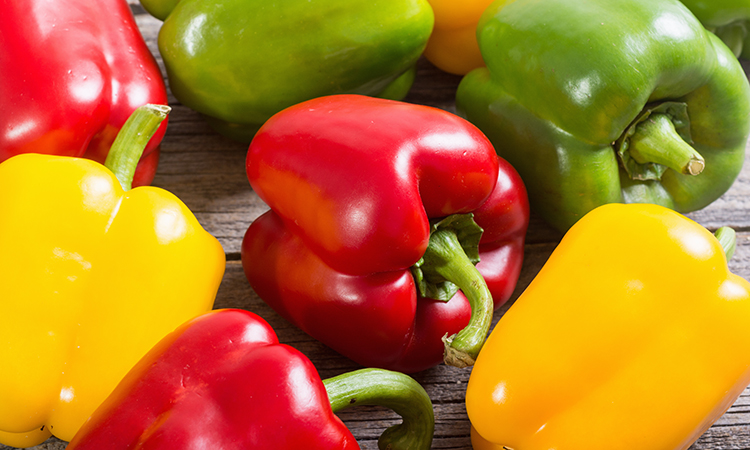Why do bell peppers change colour?
- Like
- Digg
- Del
- Tumblr
- VKontakte
- Buffer
- Love This
- Odnoklassniki
- Meneame
- Blogger
- Amazon
- Yahoo Mail
- Gmail
- AOL
- Newsvine
- HackerNews
- Evernote
- MySpace
- Mail.ru
- Viadeo
- Line
- Comments
- Yummly
- SMS
- Viber
- Telegram
- Subscribe
- Skype
- Facebook Messenger
- Kakao
- LiveJournal
- Yammer
- Edgar
- Fintel
- Mix
- Instapaper
- Copy Link
Posted: 15 December 2020 | Joshua Minchin (New Food) | No comments yet
A study into why bell peppers change colour might have revealed more sustainable production methods of the popular vegetable.


Ever wondered why bell peppers come in three different colours? Scientists from the Ruhr Universiy in Bochum (among other German Universities) think they have found the answer.
At the heart of the project are so-called plastids, typical plant cell organelles in which chlorophyll is broken down and carotenoids are produced as the fruit ripens. Visually, this transformation is clearly visible in the colour change from green to orange or red. The team documented the process in detail and published the results in The Plant Journal.
From chlorophyll to carotenoid
Because of their aromatic taste and high concentrations of health-promoting ingredients such as vitamin C and antioxidant provitamin A (carotenoids), bell peppers, or Capsicum annuum, are one of the world’s most popular vegetables (though biologically bell peppers are actually classed as a fruit).
The ripening process in peppers proceeds from photosynthetically active fruits with high chlorophyll and starch content to non-photosynthetic fruits that are rich in carotenoids. Essential steps of this transformation take place in typical plant cell organelles, the so-called plastids.
Progenitor organelles, or proplastids, are the first step. They are not yet differentiated and transform into different plastids depending on tissue type and environmental signals. In many fruit and vegetable varieties, the chromoplasts develop from them.
In pepper fruits, proplastids initially turn into photosynthetically active chloroplasts, from which the carotenoid-rich chromoplasts develop through the breakdown of chlorophyll and the photosynthesis machinery as the fruit ripens.
The crucial difference to tomatoes
The same applies to tomatoes, although the research team stressed that there is a crucial difference to peppers: tomatoes belong to the climacteric fruits that continue to ripen after harvesting.
Biochemically, this process is characterised by an enormous increase in respiratory activity with high oxygen consumption, which is named the climacteric.
This is not the case with peppers. “The green peppers frequently available in supermarkets are unripe,” says Sacha Baginsky, one of the study’s co-authors. According to him, they still carry chlorophyll-rich chloroplasts and, when the pepper is fresh, also contain a large amount of the photosynthetic storage substance starch.
“Our data now shows several differences in chromoplast differentiation between peppers and tomatoes at the molecular level, which provides insights into the different metabolism of climacteric and non-climacteric fruits,” said Baginsky.
“This is just one example of several, sometimes subtle differences in the metabolism of tomato and pepper chromoplasts. The data we have collected provides a new approach to understanding chromoplast differentiation, which we now intend to explore in more depth.” For example, the Bochum-based team will use a system described by a Spanish group in which chromoplast differentiation in leaves is induced by the production of a single enzyme. This could indicate ways to produce carotenoids more effectively and sustainably in plants.
Related topics
Genetic modification (GMO), Research & development, retail, Supermarket, Sustainability








